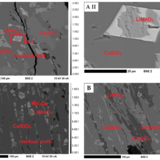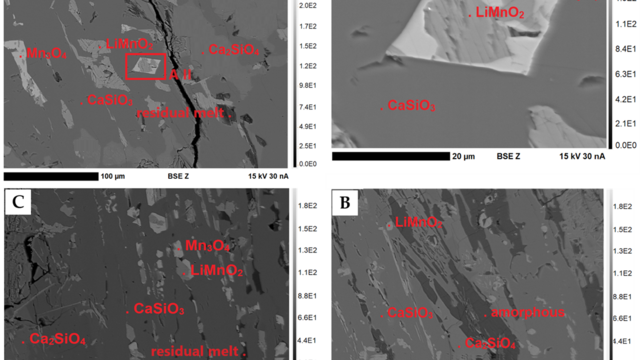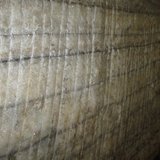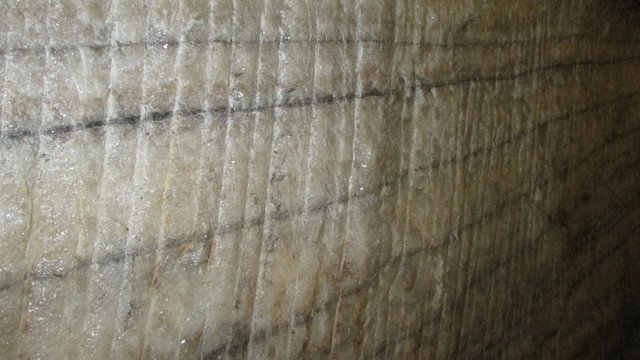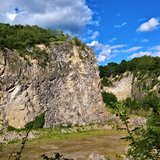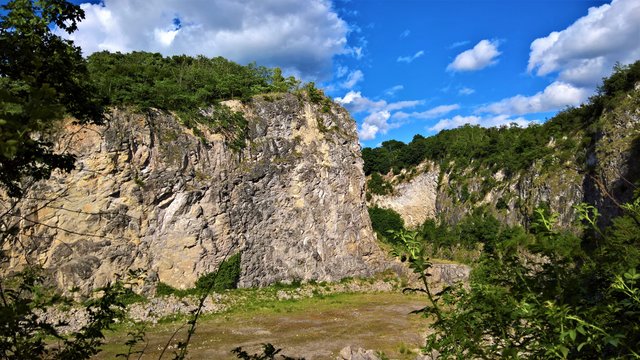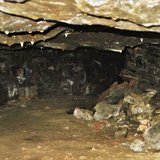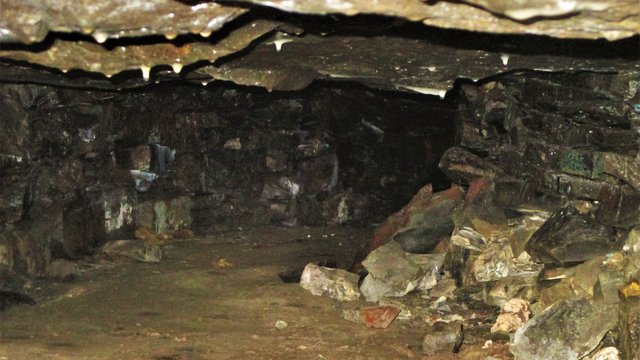Abgeschlossene Projekte
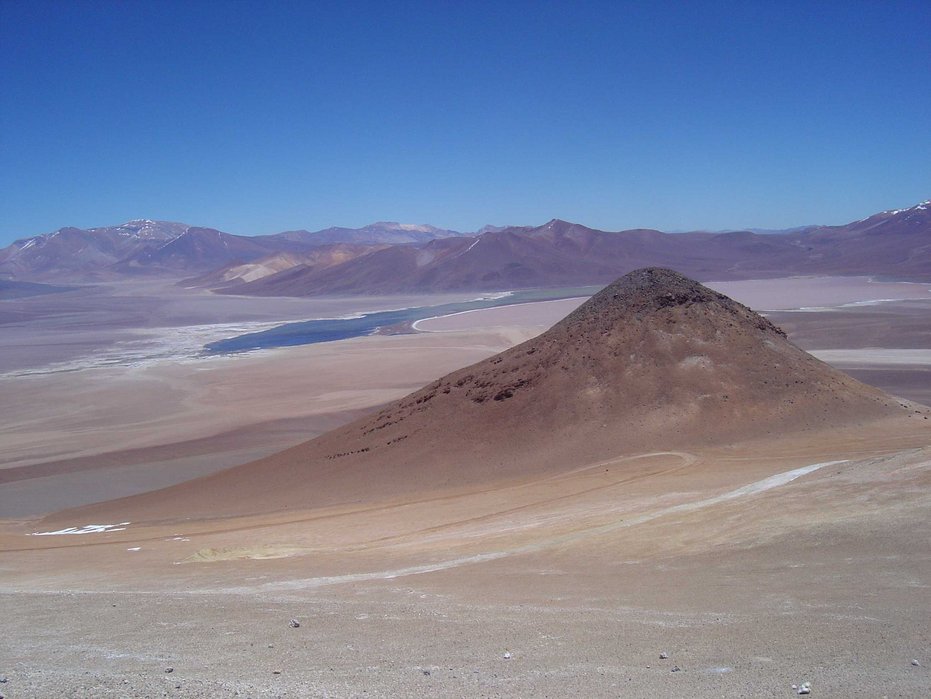
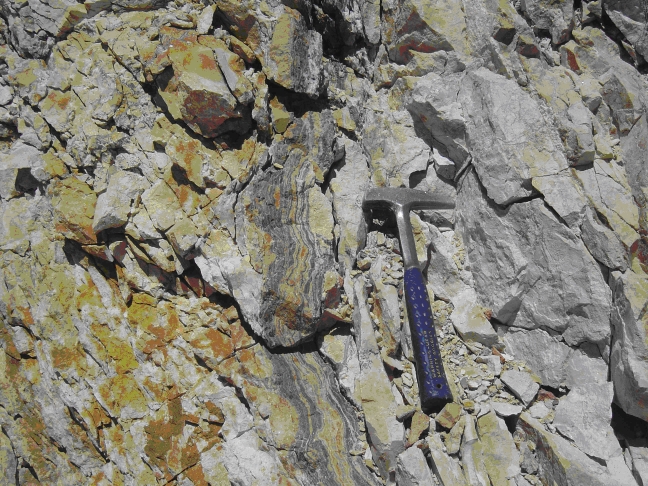
The hypogene mineralization of the Dorado Oeste zone comprises a continuous spectrum from porphyry to intermediate/high-sulfidation epithermal mineral assemblages. The hydrothermal ore sequence, from early to latest, is: magnetite-hematite-pyrite, molybdenite, bornite-chalcopyrite-pyrite, pyrite-enargite to tennantite-tetrahedrite, covellite, gold. Gold occurs rarely in µm-large aggregates in quartz and associated with pyrite, enargite and covellite. Most gold is in the sub-µm size range. A remarkable feature of the hydrothermal system is the abundance of late anhydrite (10 wt% of the rock on average, partly weathered to gypsum) over 500 m drill core depth, which occurs together with abundant alunite. The presence of deep anhydrite vein infill indicates descending acid-sulfate water from shallow steam condensation.
The hydrothermal system is chemically characterized by a relatively narrow spectrum of elements enriched compared to bulk continental crust, i.e. Au-Re-Te (400-600 x), and As-Mo-S (100-200 x). Copper and Sb are enriched by a factor of 10 and 30, respectively. The arsenic budget is controlled by enargite and fahlore, although pyrite has a constant As abundance of around 1100 ppm. Arsenic, Sb and Hg correlate well (fahlore control), while Au has no correlation with any other element. This suggests that gold fixation is not controlled by any specific mineral, and that gold occurs as native gold. The gold content of pyrite, enargite and fahlore is below the analytical detection limit of the electron microprobe, i.e. <40 ppm Au, which excludes the sulfide minerals as major gold carriers.
Eight Mo-rich bulk rock samples define a Re-Os isochron age of 11.0 ±0.2 Ma (2 sigma) with an initial 187Os/188Os ratio of 0.7 ±0.2. Three Ar-Ar age data on deep potassic alteration and on alunite-altered rock are 11.39 ± 0.48 Ma (K-feldspar), and 11.24 ± 0.70 Ma (alunite) and 11.10 ± 0.32 Ma (alunite). These ages overlap within error and define a combined age of 11.20 ± 0.25 Ma (2 sigma) for the hydrothermal system.
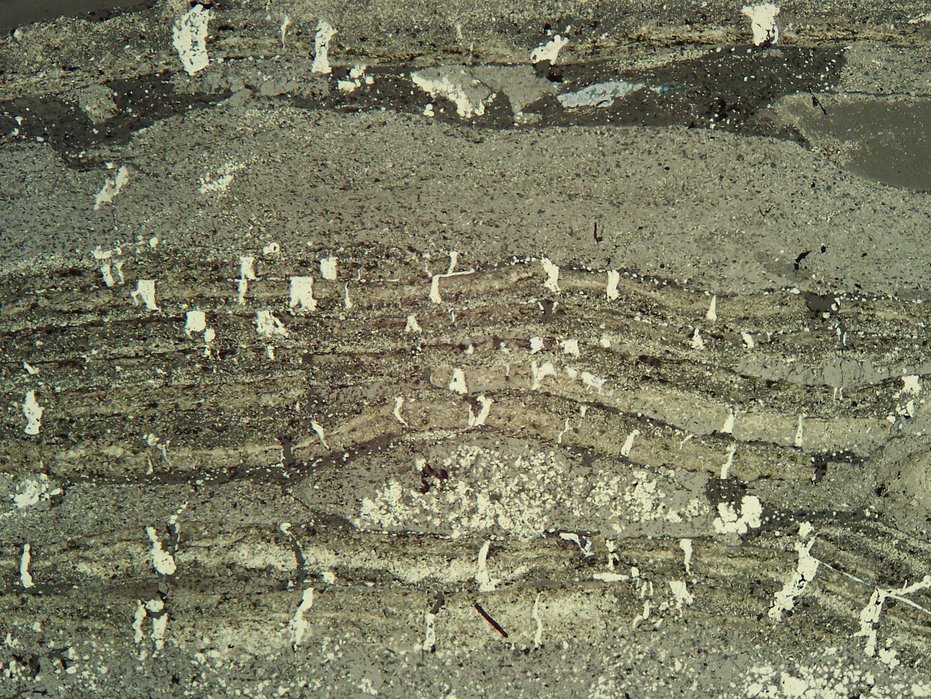
Wir untersuchen ein Gesteinsspektrum innerhalb einer Schwarzschiefer-Sequenz in Süd-China, wo die marinen Umweltbedingungen im frühen Kambriun (vor ca 540 Millionen Jahren) durch Upwelling von Meersströmungen auf den passiven Kontinentalrand der Yangtze-Plattform zu chemischer Sedimentation führten. Klastischer Input durch kontinentale Verwitterung war gering, und starke biologische Aktivität im oberflächennahen oxischen Meerwasser führte zu stark euxinischen (Sauerstoff-defizient und Sulfid-reich) Bedingungen in tieferen Becken, ähnlich dem heutigen Schwarzen Meer. Redox-empfindliche Spurenmetalle wurden in der Wassersäule und an submarinen Krusten ausgefällt. Das breite Spektrum von von synsedimentär-frühdiagenetischer Metallanreicherunge reichr von Phosphorit über Baryt zu V-U-reichen Schwarzschiefern in suboxischem Milieu zu Mo-Ni-Au-PGE-reichen Schawrzschiefern in euxinischem Milieu.
Die Isotopenzusammensetzung von Molybdän, das quantitativ aus dem Meerwasser ausgefällt wurde, zeigt die Zusammensetzung der frühkambrischen Ozeane an, die global wesentlich weniger oxidiert waren als die heutigen Ozeane. Die Mo-Isotopie erlaubt eine Rekonstruktion des ozeanischen Paläo-Oxidationszustands und zeigt schnell wechselnde marine Umwelt-Bedingungen an der Grenze von Präkambrium/Kambrium, womit auch für die Entwicklung der Metazoen ("Cambrian Explosion") in Verbindung steht.
- Wille M, Nägler TF, Lehmann B, Schröder S, Kramers JD (2008) Hydrogen sulphide release to surface waters at the Precambrian/Cambrian boundary. Nature 453: 767-769
- Lehmann B, Nägler TF, Holland HD, Wille M, Mao J, Pan J, Ma D, Dulski P (2007) Highly metalliferous carbonaceous shale and Early Cambrian seawater. Geology 35: 403-406
- Lehmann B, Mao J, Li S, Zhang G, Zeng M (2003) Re-Os dating of polymetallic Ni-Mo-PGE-Au mineralization in Lower Cambrian black shales of South China and its geological significance - a reply. Economic Geology 98: 663-665
- Mao J, Lehmann B, Du A, Zhang G, Ma D, Wang Y, Zend M, Kerrich R (2002) Re-Os dating of polymetallic Ni-Mo-PGE-Au mineralization in Lower Cambrian black shales of South China and its geological significance. Economic Geology 97: 1051-1061
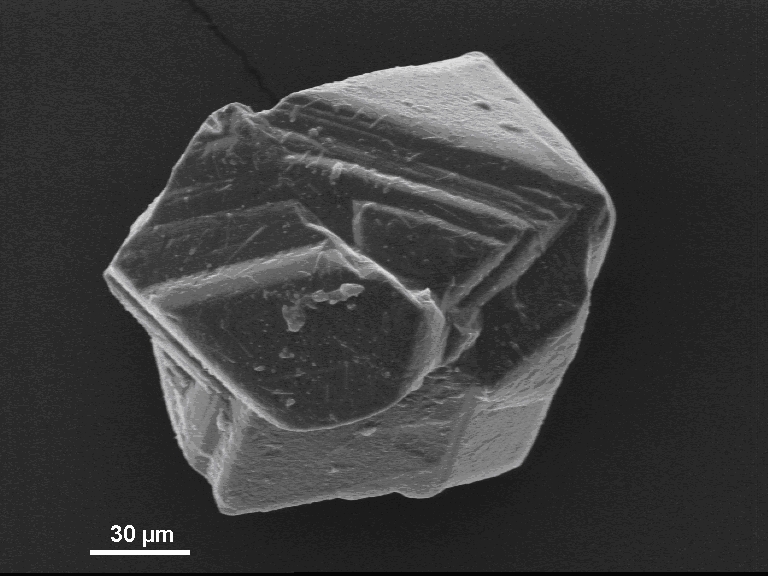
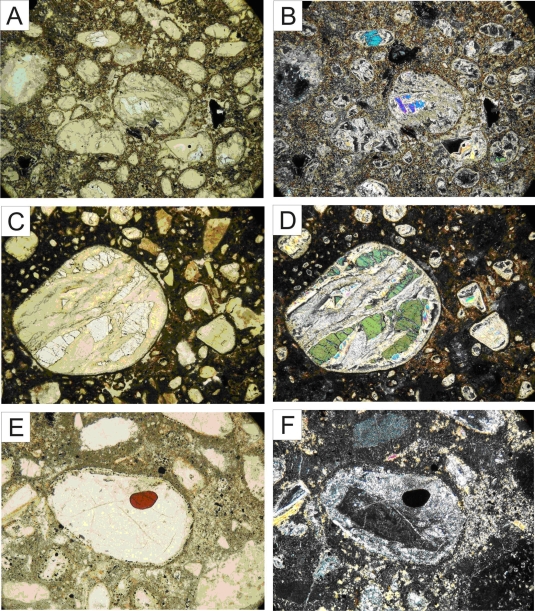
Wir untersuchen das kürzlich entdeckte Mainpur Kimberlit-Feld auf dem Bastar-Kraton in Zentral-Indien. Vier der bisher sechs bekannten Diatrem-Fazies Kimberlite sind Diamant-führend, und im artisanalen Bergbau wurden Steine in Schmuck-Qualität bis 200 ct gefunden. Bohrkerne aus der Diamat-führenden Behradih-Pipe bestehen aus Kimberlit in Diatrem-Fazies mit pelletalem Gefüge und Olivin-Makrokrysten. Das Gestein ist stark alteriert (Talk-Serpentin-Chlorit-Karbonat-Alteration). Krustale Xenolithe von resorbiertem Feldspat, Granit, und Dolerit sind häufig. Der Kimberlit hat C.I. ≥1.6 (Kontaminations-Index), 40-43 Gew% SiO2, <5 Gew% Al2O3, und Mg-Zahl von 83-87. Die Spurenelement-Muster sind typisch für kimberlitische Gesteine und schliessen Lamproit aus.
Die Pipes haben überraschend junge 40Ar/39Ar-Alter (Gesamtgestein) und U–Pb-Alter (Perovskit) um 65 Ma. Diese Alter überlappen mit der Hauptphase des Deccan-Flutbasalt-Magmatismus, und legen für sowohl Flutbasalte wie Kimberlite ähnliche tektonomagmatische Kontrolle nahe. Das Vorkommen von Makrodiamanten in den Pipes erfordert eine dicke subkratonische Lithosphäre (>140 km) an der Kreide-Tertiär-Grenze in Indien, während die heutige Lithosphäre wesntlich dünner ist. Etwa ein Drittel der indischen Lithosphäre muss während oder nach dem Dekkan-Flutbasalt-Ereignis verloren gegangen sein. Die besonders schnelle Nord-Bewegung der indischen Platte vor der Kollision mit Eurasien kann nicht mit lithospärischer Verdünnung während des Zerfalls von Gondwana um 130 Ma erklärt werden, wie bisher gedacht.
- Lehmann B, Burgess R, Frei D, Belyatsky B, Mainkar D, Chalapathi Rao NV, Heaman LM (2010) Diamondiferous kimberlites in central India synchronous with Deccan flood basalts. Earth and Planetary Science Letters 290: 142-149
- Mainkar D, Lehmann B (2007) The diamondiferous Behradih kimberlite pipe, Mainpur Kimberlite Field, Chhattisgarh, India: reconnaissance petrography and geochemistry. In: Fareeduddin and Rao MS, eds, Kimberlites and related rocks of India, Journal Geological Society of India 69: 547-552
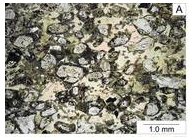
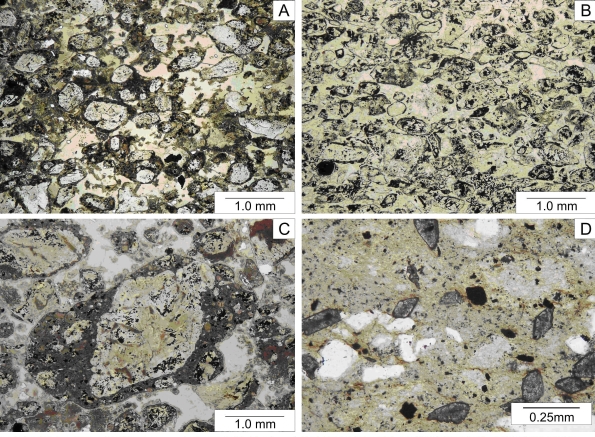
Das Kimberlit-System von Tokapal in Tuff-Fazies (auch Krater-Fazies genannt) tritt in der proterozoischen chemoklastischen Plattform-Sequenz des Indravati-Beckens auf dem archaischen bis mesoproterozoischen Bastar-Kraton in Zentral-Indien auf. Die Lapilli-Tuffe bestehen aus Pseudomorphosen von Olivin-Makrokrysten und juvenilen Lapilli in einer feinkörnigen Talk-Serpentin-Karbonat-Matrix mit lokal häufigem Spinell und Titanit. Granat ist selten. Das ungleichkörnige und lokal schichtige Gefüge ist weitgehend erhalten, obwohl die Olivin-Komponente weitgehend zerstört ist. Das multiple Kimberlit-System hat etwa kreisförmige Form (2.5 km Durchmesser) und ist wahrscheinlich das älteste und grösste bekannte Krater-Fazies Kimberlit-System der Erde. Das benachbarte Bhejripadar-System mit ähnlicher petrgographischer und chemischer Charakteristik liegt etwa 4 km nordwestlich und har einige 100 m im Durchmesser.
Gesteinsproben von beiden Systemen haben zumeist mässige Kontamination (35-50 Gew% SiO2, <4 Gew% Al2O3) und Mg-Zahl von 82-89. Die Spurenelement-Muster sind typisch für kimberlitische Gesteine (REE, Cr, Ni, Nb, Zr), mit starker Auslaugung der mobilen Elemente aufgrund postmagmatischer Alteration und Verwitterung (Ba, Sr, Rb, Alkalien). In-situ U-Pb-Datierung mittels Laser-Ablation und eines Quadrupol-basierten ICP-MS von autometasomatischem Titanit ergab ein Alter von 620 ±30 Ma (2σ).Die Nd-Isotopenzusammensetzung mit εNd um -4.5 (T=620 Ma) ist ähnlich der South-African-Group- II-Kimberlite (Orangeit). Mikrodiamant-Tests von 20-kg-Gesteinsproben waren bisher nicht erfolgreich.
- Mainkar D, Lehmann B, Haggerty SE (2004) The crater-facies kimberlite system of Tokapal, Bastar District, Chhattisgar, India. Lithos 76: 201-217
- Lehmann B, Mainkar D, Belyatsky B (2006) The Tokapal crater-facies kimberlite system, Chhattisgarh, India: reconnaissance petrography and geochemistry. Journal of the Geological Society of India 68: 9-18
- Lehmann B, Storey C, Mainkar D, Jeffries T (2007) In-situ U-Pb dating of titanite in the Tokapal-Bhejripadar kimberlite system, central India. In: Fareeduddin and RaoMS, eds, Kimberlites and related rocks of India. Journal Geological Society of India 69: 553-565
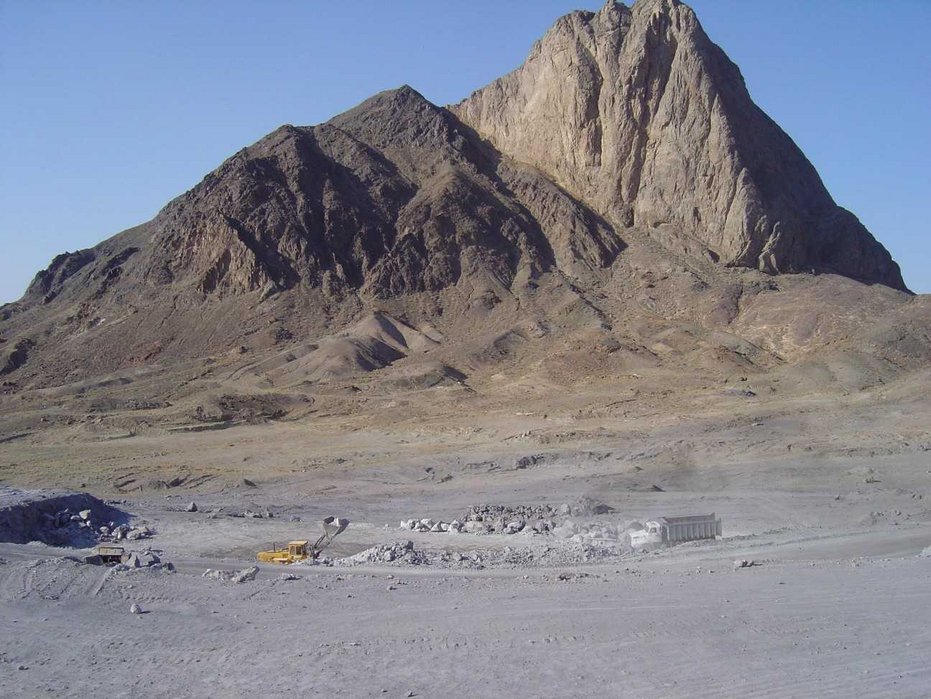
Der Bafq-Bergbaudistrikt liegt in dem frühkambrischen vulkano-plutonischem Gürtel von Kashmar-Kerman in Zentral-Iran und enthält wirtschaftlich wichtige “Kiruna-Typ” Magnetit-Apatit-Lagerstätten. Die hydrothermale Magnetit-Apatit-Mineralisation tritt in Form von massiven Erzkörpern, metasomatischen Verdrängungen, Gängen und Stoclworks auf. Chemische Th-U-Pb-Datierunf von Th-reichem Monazit in Apatit mittels Mikrosonden-Analytik ergibt ein Isochronen-Alter von 515 ±21 Ma (initial PbO intercept = 68 ppm), oder 529 ±21 (forced initial PbO = 0), das zeitgleich mit der Platznahme des vulkano-plutonischen Nebengesteins der Magnetit-Apatit-Mineralisation, sowie weiträumiger Sedimentation von evaporitischen Gesteinen in Zentral-Iran ist. Das Monazit-Alter und die mineralogischen und geochemischen Daten lassen vermuten, dass die Magnetit-Apatit-Lagerstätten mit grossräumiger Brine-Zirkulation verbunden sind, die durch den kambrischen felsischen Magmatismus ausgelöst wurde.
- Torab FM, Lehmann B (2006) Iron oxide-apatite deposits of the Bafq district, central Iran: an overview from geology to mining. World of Mining - Surface and Underground 58: 355-362
- Torab FM, Lehmann B (2007) Magnetite-apatite deposits of the Bafq district, Central Iran: apatite geochemistry and monazite geochronology. Mineralogical Magazine, 71:347-363
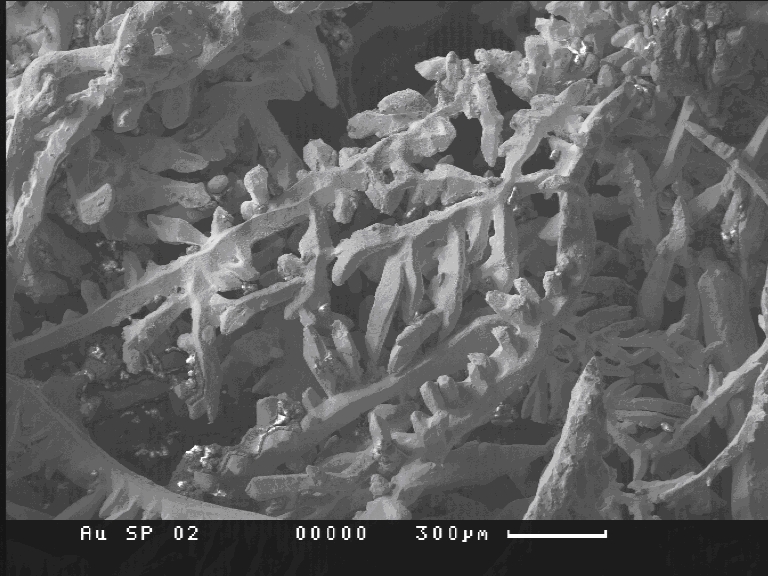
Die Bildung von Platin-Palladium-Nuggets ist umstritten (supergen über hydrothermal bis magmatisch). Córrego Bom Sucesso im Lagerstättenbezirk von Serro in Minas Gerais, Brasilien, ist weltbekannt für historische Pt-Pd-Nuggets, sowie für alluviale Gold- und Diamant-Vorkommen. Die alluviale Pd-Pt-Au-Mineralisation tritt in Form von nieren-/traubenförmigen Pd-Pt-Aggregaten und fein-dendritischen Pd-Au-Aggregaten in klastischen and Humus-reichen Talsedimenten auf Quarziten der paläo- bis mesoproterozoischen Espinhaço-Supergruppe auf. Wir untersuchten dieses Gebiet geologisch und mineralogisch, und können einen ca. 240-km-langen, Nord-streichenden Au-Pd-Pt-Gürtel aushalten, der hydrothermale Pd-Pt-Au-Vorkommen im südlichen Teil führt (Quadrilátero Ferrífero und Itabira-Distrikt), während alluviale Pd-Pt-Au-Vorkommen auf den nördlichen Teil beschränkt sind (südliche Serra do Espinhaço). Die hydrothermalen Pd-Pt-Au-Vorkommen, örtlich als “Jacutinga” bekannt, treten als spät-orogene Quarz-Hämatit-(Talk-Kaolin)-Gänge auf, die die regionale Schieferungstektonik der Itabira Eisenformation von Brasiliano-Alter schneiden. Der Au-Pd-Pt-Gürtel folgt dem regionalen Überschiebungs-Trend der ~0.6 Ga Brasiliano-Orogenese, und die hydrothermale Jacutinga-Mineralisation kann als hoch-oxidierte Variante des orogenen Gold-Lagerstättenspektrums verstanden werden. Sekundäre nierenförmige und dendritische Pt-Pd-Aggregate und primäre (detritische) Au-Pd-Kristalle treten nur in den alluvialen Platin-führenden Vorkommen des nördlichen Gürtels in der Serra do Espinhaço auf. Die Herkunft geht auf Jacutinga-Ganglagerstätten zurück, wie aus dem Vorkommen von reichlich detritischem Hämatit und Rutil geschlossen werden kann, sowie aus der Entdeckung von detritischem Hongshiit (Pt-Cu-Legierung), der in Itabira Reicherzfälle bildet. Wir vermuten, dass die nierenförmigen Pt-Pd-Aggregate in situ durch elektrochemische Metall-Akkretion aus verdünnten Verwitterungs-Lösungen gebildet wurden, die Pt und Pd aus der Auflösung von detritischen Pt-Pd-Mineralen von Jacutinga-Gängen bezogen. Die Verbindung von Jacutinga and Platin-führenden Alluvia zeigt einen für Pd-Pt-Au-Mineralisation prospektiven Trend über 240 km Länge an, der von Ouro Preto bis Diamantina reicht. Sehr hoher Oxidationszustand für effiziente Niedrig-Temperatur-Mobilisierung von Pt, Pd und Au wurde offensichtlich durch die quarzitischen und Hämatit-reichen Gesteinsserien der Serra do Espinhaço hergestellt, während Fluide im südlichen Gürtel durch Grünschiefer bei mässigem pH und niedrigerem Oxidationszustand gepuffert waren.
- Cabral AR, Lehmann B, Tupinambá M, Schlosser S, Kwitko-Ribeiro R, de Abreu F (2009): The platiniferous Au-Pd belt of Minas Gearis, Brazil, and genesis of its botryoidal Pt-Pd aggregates. Economic Geology 104: 1265-1276
- Cabral AR, Vymazalová A, Lehmann B, Tupinambá M, Haloda J, Laufek F, Vlcek V, Kwitko-Ribeiro R (2009): Poorly crystalline Pd-Hg-Au intermetallic compounds from Córrego Bom Sucesso, southern Serra do Espinhaço, Brazil. European Journal of Mineralogy 21: 811-816
- Cabral AR, Tupinambá M, Lehmann B, Kwitko-Ribeiro R, Vymazalová A (2008): Arborescent palladiferous gold and empirical Au2Pd and Au3Pd in alluvium from southern Serra do Espinhaço, Brazil. Neues Jahrbuch für Mineralogie Abhandlungen 184: 329-336
- Cabral AR, Beaudoin G, Choquette M, Lehmann B, Polônia JC (2007): Supergene leaching and formation of platinum in alluvium: evidence from Serro, Minas Gerais, Brazil. Mineralogy and Petrology 90: 141-150
- Cabral AR, Beaudoin G, Kwitko-Ribeiro R, Lehmann B, Polonia JC, Choquette M (2006): Platinum-palladium nuggets and mercury-rich palladiferous platinum from Serro, Minas Gerais, Brazil. Canadian Mineralogist 44: 385-397
- Cabral AR, Lehmann B, Kwitko R, Cravo Costa CH (2002): The Serra Pelada Au-Pd-Pt deposit, Carajás mineral province, northern Brazil: reconnaissance mineralogy and chemistry of very high grade palladian gold mineralization. Economic Geology 97: 1127-1138
(DFG-Projekt LE 578/29-1)
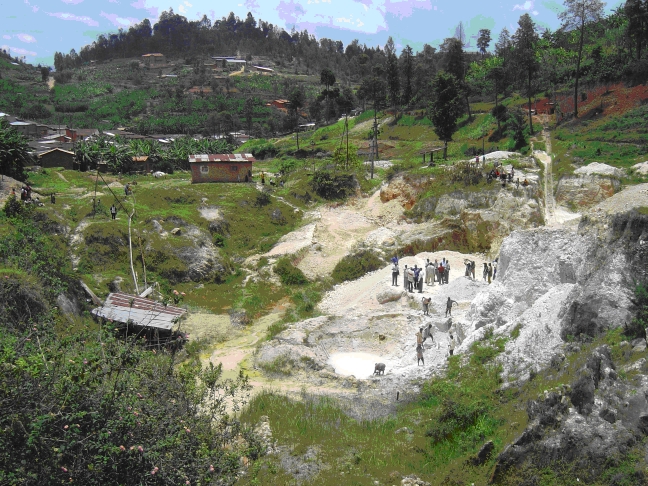
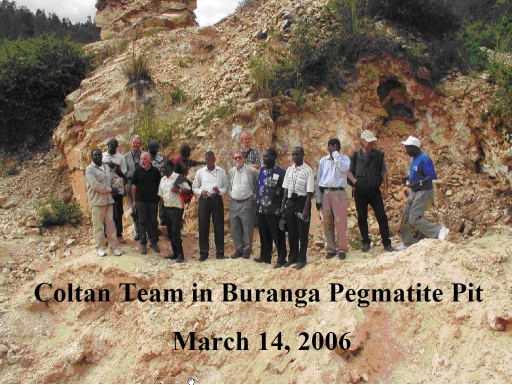
Project summary:
See poster presented at recent VW Grantees Meeting in Dar es Salaam 5 - 8 January 2009
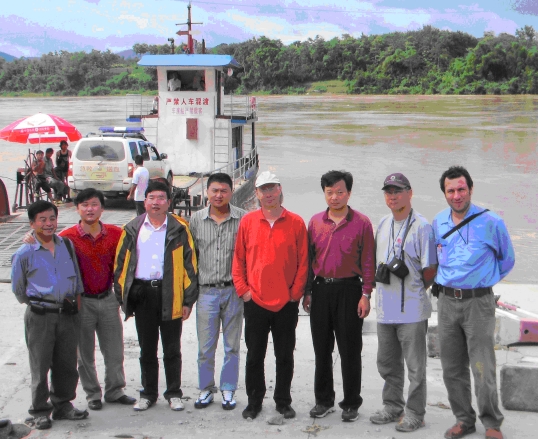
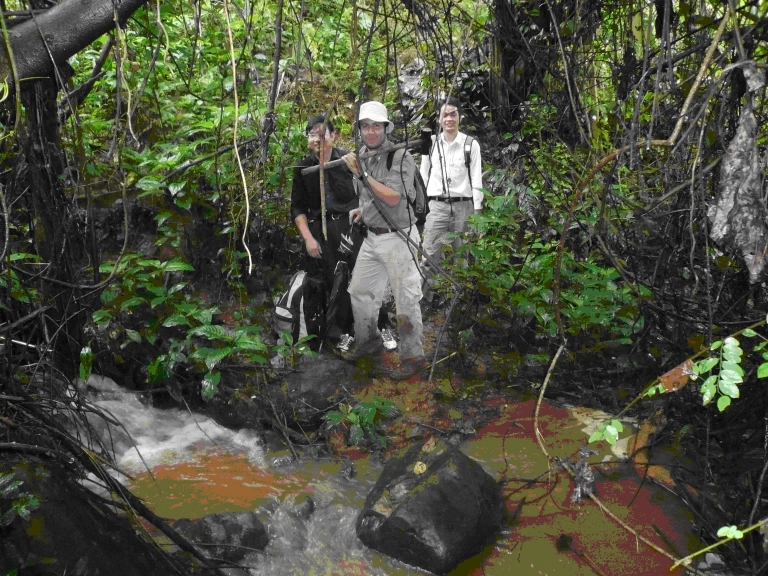
The 258 Ma Emeishan flood basalt province in southern China (Sichuan, Yunnan) hosts several vanadium-titanium and PGE (platinum-group element) mineral deposits. The southern part of the Emeishan province is affected by large-scale Himalayan strike slip tectonics which has displaced some of the Emeishan members along the Ailaoshan/Red River fault zone, probably up to northwestern Vietnam. A similar major fault zone is the Lancangjiang zone 100-200 km SW of the Ailaoshan zone. We study several mafic-ultramafic intrusions from the Lancangjiang zone which are very little known. Focus is on the area between Jinghong and the Burmese border, and on the Banpo intrusion. The rocks are petrographically and chemically characterized, plus U-Pb dating on zircon, and bulk-rock Ar-Ar dating. The tectonomagmatic interpretation will allow an estimate of the regional exploration potential.
(BGR project 01/2006, in cooperation with Yunnan Geological Survey and University of Hongkong)
- Hennig D, Lehmann B, Frei D, Belyatsky B, Zhao XF, Cabral AR, Zeng PS, Zhou MF, Schmidt K (2009): Early Permian seafloor to continental arc magmatism in the eastern Paleo-Tethys: U–Pb age and Nd–Sr isotope data from the southern Lancangjiang zone, Yunnan, China
Lithos 113: 408–422
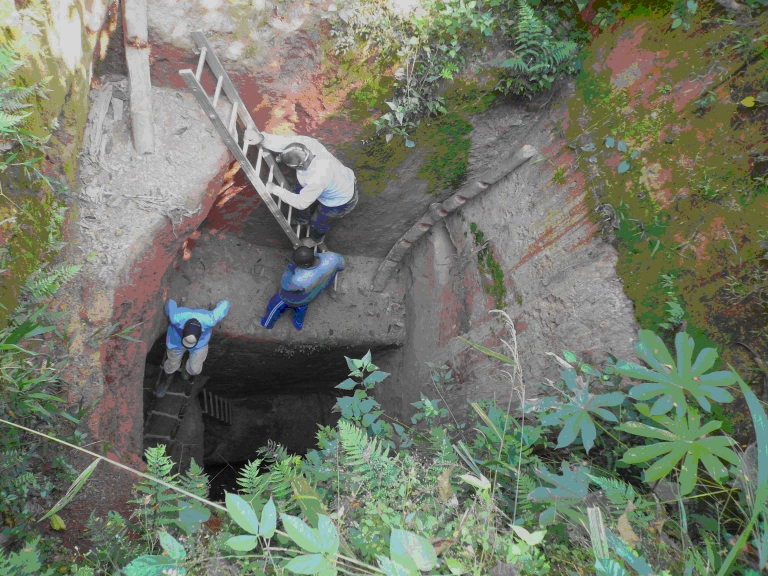
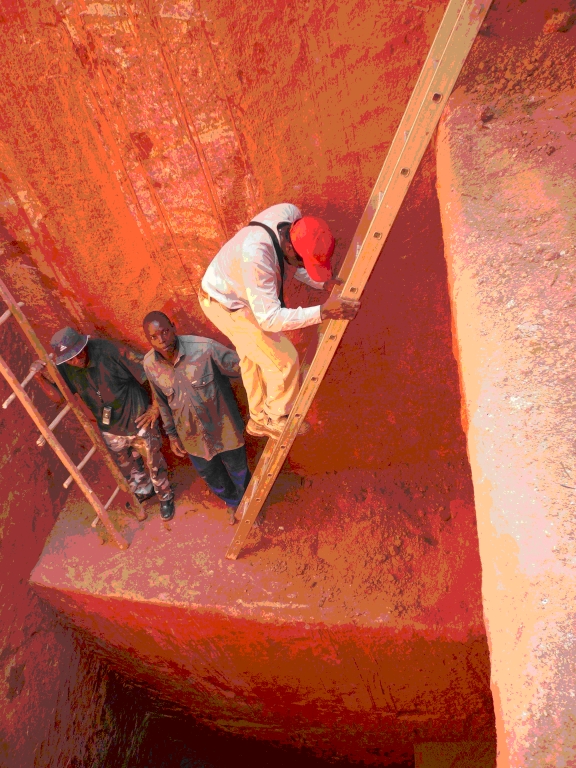
The Batouri gold district in SE Cameroon hosts a number of deeply weathered shear-zone related gold occurrences which are currently under exploration. The lode gold mineralization (quartz-pyrite-sphalerite-arsenopyrite) appears to be related to felsic magmatism. We will study the hydrothermal mineral associations and date both hydrothermal muscovite (Ar-Ar stepped heating) and zircon (U-Pb) in granite. A particular feature is muscovite in meter-thick saprolite which will be tested for its potential for Ar-Ar dating in deeply weathered terrain.
- Suh CE, Lehmann B (2003) Morphology and electron-probe microanalysis of residual gold grains at Dimako, southeast Cameroon. Neues Jahrbuch für Mineralogie Monatshefte 2003: 255-275
- Suh CE, Lehmann B, Mafany GT (2006) Geology and geochemical aspects of lode gold mineralization at Dimako-Mboscorro, SE Cameroon. Geochemistry: Exploration, Environment, Analysis 6: 295-309
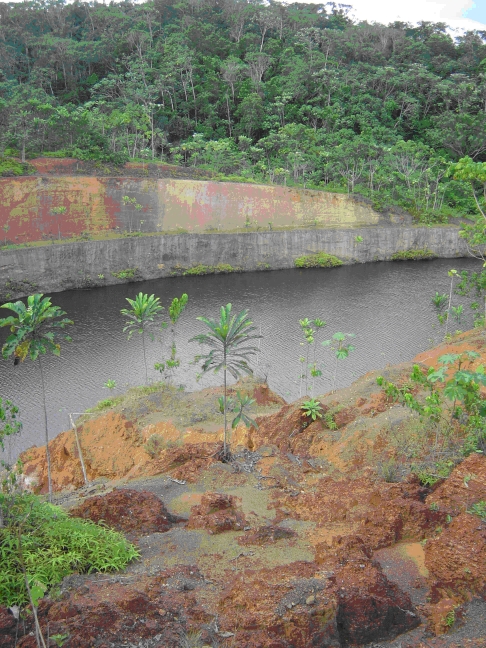
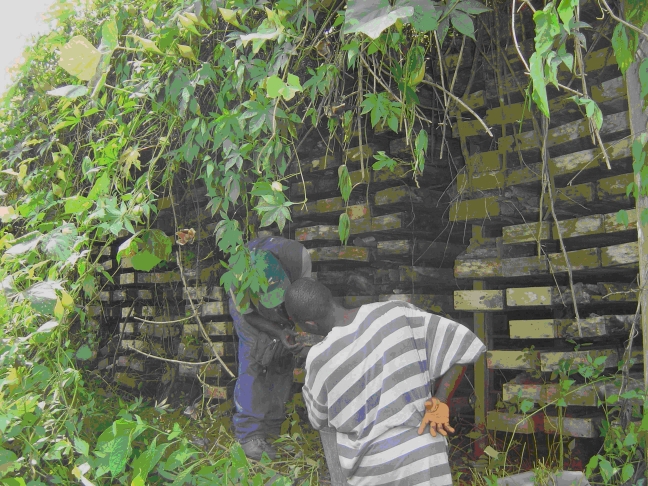
The Afema gold district in SE Côte d'Ivoire is controlled by regional NE-trending shear zones within a Paleoproterozoic (Birimian) volcanosedimentary sequence affected by low-grade metamorphism (chlorite geothermometry: 200-400°C). The post-metamorphic mineralization is in mylonitic quartz-muscovite-carbonate veins (locally cryptocrystalline graphite) parallel to the regional schistosity in meta-arenite and consists of pyrite, arsenian pyrite, arsenopyrite, and minor amounts of chalcopyrite, sphalerite, tetrahedrite, tennantite. Gold occurs as blebs and invisible in arsenian pyrite and arsenopyrite. Arsenopyrite geothermometry gives temperatures of 300-360°C. The hydrothermal system is chemically characterized by elevated As and Au, and depletion in Na (feldspar destruction). Ar-Ar dating on vein muscovite gave plateau ages of 1840 ±17 Ma and 1833 ±16 Ma; a Re-Os errorchron has an age of 1.9 ±0.1 Ga. Nd isotope analyses are in progress.
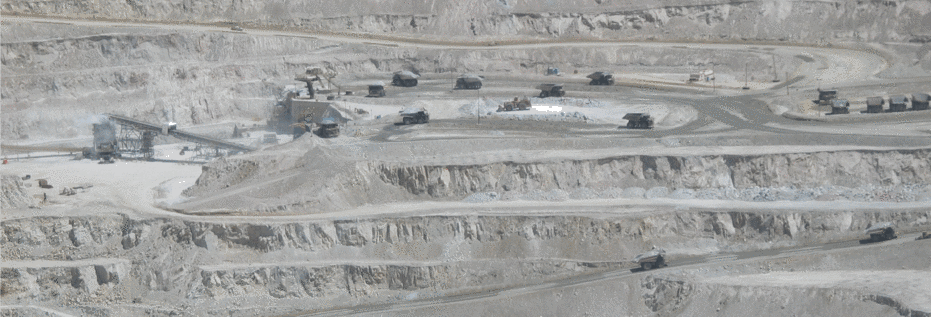
We study the geological formation and evolution of Late Archean black shales and banded iron formation in the Carajás Mineral Province, Brazil. The project is in cooperation with Vale, and is focussed on the Serra Sul high-grade iron ore deposit, the largest and richest undeveloped iron ore deposit on Earth (measured resources: 9Gt @ 67 % Fe). We combine the study of detailed mineralogy and geochemistry with data from a number of isotope systems (Re-Os. Sm-Nd, O, Mo, Fe, S).



